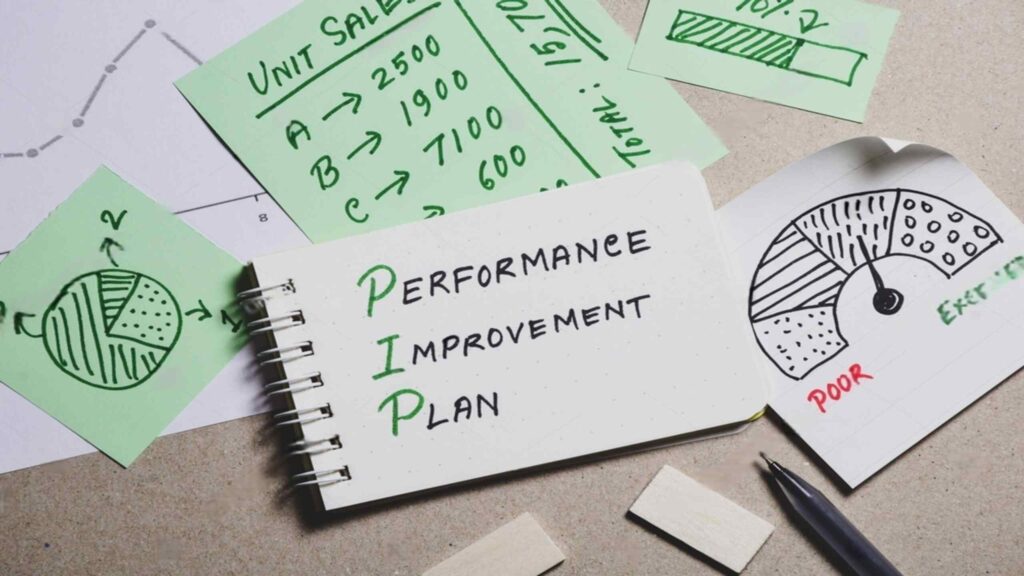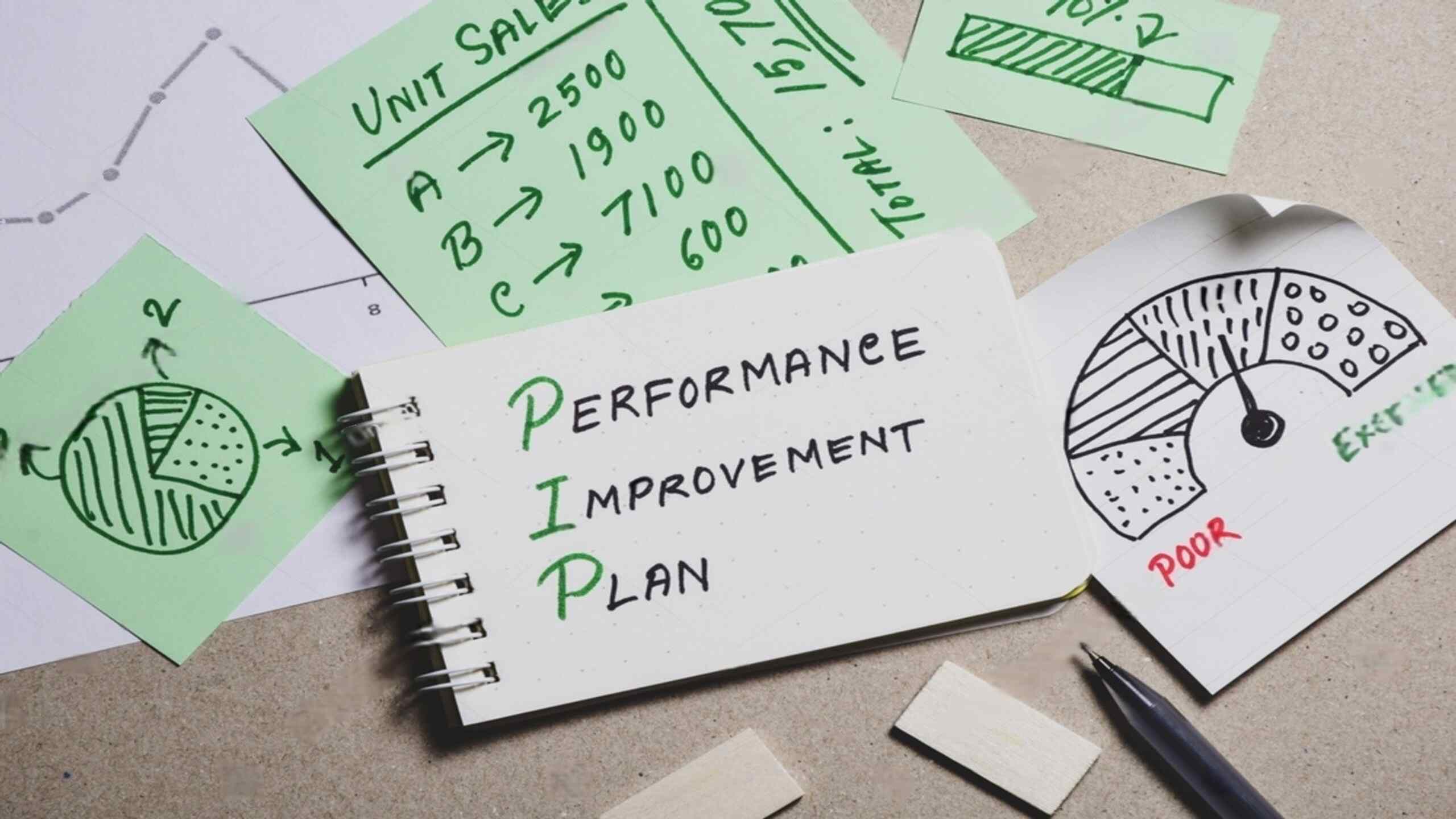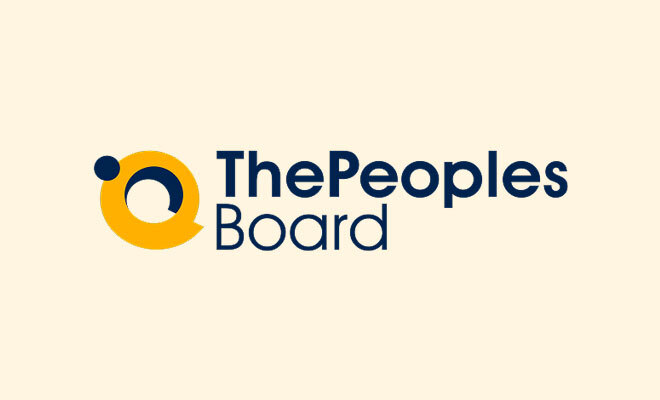The performance improvement plan (PIP) is a structured document designed to help employees improve their performance to meet organizational standards. In a workplace where teamwork, cultural nuances, and organizational goals intersect, an effective PIP can bridge the gap between an employee’s current performance and potential.
This article will guide you through creating an actionable and fair PIP, ensuring it fosters growth and supports organizational success.
What is a Performance Improvement Plan?
A PIP is a formal document that outlines areas where an employee’s performance falls short and specifies steps to address the issues. It serves as a corrective tool and a support system, helping employees regain confidence and align with the employee’s performance expectations.
Key Components of a Performance Improvement Plan
When creating an effective PIP, it is crucial to keep the following factors in mind:
- Clear Objectives: Specific performance standards for the employee to achieve.
- Actionable Steps: A roadmap for improvement.
- Timeline: A defined period for monitoring progress.
- Support Mechanisms: Resources such as coaching or training.
- Evaluation Criteria: Methods to measure success.
With these components, you can create a PIP that helps you achieve your intended target while keeping the available resources in consideration. This helps in formulating a strategy that is effective in its implementation and practical in its goals.
Why is a Performance Improvement Plan Important?
An effective PIP in place can provide many advantages to your organization’s overall growth. Some of the major reasons behind this include:
- Transparency: A PIP clearly defines performance expectations through the performance improvement plan, ensuring that employees understand the structured approach to address performance issues.
- Professional Growth: An effective PIP empowers employees to overcome challenges within the workplace.
- Retention: Through the use of PIP, you can address issues proactively, reducing turnover. This helps in retaining talented employees who are well-aware of your company’s work culture and norms.
- Productivity: It aligns employee goals with organizational objectives, providing stellar incentive for the workers to give it their all and continue to give stellar results.
- Fairness: PIP provides an equal opportunity for improvement before further actions like termination.
Identifying the Need for a Performance Improvement Plan
Recognizing the need for a performance improvement plan (PIP) is a pivotal step in addressing employee underperformance effectively. A PIP is a formal document that outlines specific areas of improvement, goals, and objectives for an employee to meet. Identifying the signs of underperformance and understanding the root cause is essential before implementing a PIP.
Signs of Underperformance
Signs of underperformance can vary depending on the job role, industry, and organization. However, some common indicators include:
- Consistently Missing Deadlines: Regularly failing to meet performance targets or deadlines.
- Poor Quality of Work: Delivering work that lacks attention to detail or does not meet the required standards.
- Inadequate Communication: Struggling with effective communication or teamwork skills.
- Low Productivity: Demonstrating a lack of initiative or consistently low productivity levels.
- Negative Feedback: Receiving unfavorable feedback from coworkers, supervisors, or customers.
Determining the Root Cause of Underperformance
Understanding the root cause of underperformance is critical to developing an effective PIP. It is essential to identify whether the issue is related to:
- Lack of Training or Skills: The employee may need additional training or skill development in areas necessary for their role.
- Inadequate Resources or Support: The employee might lack the necessary resources or support to perform effectively.
- Poor Communication or Management: There could be issues with communication or management practices.
- Personal Issues or Health Problems: Personal challenges or health issues might be affecting performance.
- Lack of Motivation or Engagement: The employee may be disengaged or unmotivated.
By understanding the root cause of underperformance, employers can develop a targeted PIP that addresses the specific needs of the employee.
Steps to Design an Effective Performance Improvement Plan

To effectively create an implementable PIP, make sure to follow the necessary steps with due diligence.
Identify the Need for a Performance Improvement Plan
Before initiating the performance improvement plan, assess the situation to determine whether it is necessary. Factors to consider include:
- Persistent underperformance despite informal feedback.
- Behavioral concerns impacting team dynamics.
- Skill gaps affecting deliverables.
Set Clear Goals
Define specific and measurable objectives aligned with the employee’s role. Avoid vague statements like “Improve your performance.” Instead, aim for quantifiable outcomes.
Example: Instead of saying, “You need to submit reports on time,” say, “Submit monthly reports by the 5th of every month.”
Engage in a Two-Way Discussion
Involve the employee in drafting the PIP. A collaborative approach fosters ownership and motivation by encouraging the employee to define realistic goals and outline necessary resources.
- Discuss areas of concern and seek the employee’s perspective.
- Identify barriers to performance, such as a lack of resources or training.
Example Dialogue:
- Manager: “I’ve noticed delays in project submissions. Are there challenges you’re facing?”
- Employee: “I struggle with prioritizing tasks when multiple deadlines overlap.”
Define the Plan’s Framework
For a clear and actionable PIP, it is important to have a framework that addresses major strategy factors, including:
Areas for Improvement: Clearly state the employee’s performance issues.
Example: “Project submissions have been delayed by an average of 7 days over the last quarter.”
Actionable Steps: Outline specific tasks or changes needed.
Example: “Use project management software to prioritize tasks.”
Resources and Support: Provide tools, training, or mentorship to aid improvement.
Example: “Attend a time management workshop within the plan’s first month.”
Timeline: Set a realistic duration for the PIP, typically 30-90 days.
Example: “This plan will span 60 days, with weekly check-ins to review progress.”
Success Metrics: Define criteria to evaluate improvement.
Example: “Submit all deliverables by the specified deadlines for three consecutive months.”
Provide Continuous Feedback
Regular check-ins are critical to track the employee’s progress and address challenges. Feedback during the PIP should be constructive, encouraging, and solution-focused.
Example: Week 2: “Your recent submission was on time and well-structured. Keep up the focus on meeting deadlines.”
Document Everything
Maintain a written record of all discussions related to the performance improvement plan (PIP), progress updates, and outcomes. This ensures transparency and serves as a reference in case further action is required.
Evaluate the Outcomes
At the end of the PIP period:
- Assess whether the employee met the outlined goals and evaluate the employee’s progress.
- Discuss the results with the employee, acknowledging improvements or addressing persistent gaps.
Possible outcomes include:
- Successful completion of the PIP.
- Extension of the PIP if partial progress is evident.
- Initiation of further actions (e.g., reassignment or termination) if no improvement is observed.
Challenges in Implementing Performance Improvement Plans in India
- Cultural Sensitivities: Employees may view PIPs as punitive rather than supportive, affecting the employee’s perception of the process.
- Reluctance to Provide Feedback: Managers may hesitate to address issues directly due to hierarchical norms.
- Resource Constraints: Smaller organizations may lack the infrastructure for robust support systems.
Solutions:
- Emphasize the developmental intent of PIPs by collaborating with the employee to define realistic goals, outline necessary resources, and foster an open dialogue to encourage commitment to improvement.
- Train managers in feedback delivery.
- Use cost-effective tools like online courses or peer mentoring.
Best Practices for an Effective Performance Improvement Plan
- Maintain Empathy: Approach the process with understanding and support, focusing on the employee’s development.
- Ensure Fairness: Apply consistent standards across all employees.
- Focus on Development: Treat the PIP as an opportunity for growth, not a punitive measure.
- Seek Employee Buy-In: Involve the employee in every step to foster commitment.
- Celebrate Success: Acknowledge and reward progress to motivate further improvement.
Common Mistakes to Avoid
When implementing a PIP, it is essential to avoid common mistakes that can undermine the effectiveness of the plan. Here are some pitfalls to watch out for:
- Failing to Clearly Communicate: Ensure that the reasons for the PIP and the expected outcomes are clearly communicated to the employee. Ambiguity can lead to confusion and resistance.
- Setting Unrealistic Goals: Goals should be challenging yet achievable. Setting unrealistic or unachievable goals can demotivate the employees and set them up for failure.
- Not Providing Adequate Support: A PIP should include the necessary support and resources to help the employee improve. Without this, the plan is unlikely to succeed.
- Failing to Regularly Review and Update the PIP: Regular check-ins and updates are crucial to track progress and make necessary adjustments. Neglecting this can render the PIP ineffective.
- Using the PIP as a Disciplinary Measure: A PIP should be a developmental tool, not a punitive one. Using it as a disciplinary measure can create a negative atmosphere and hinder improvement.
By avoiding these common mistakes, employers can ensure that the PIP is effective in improving employee performance and achieving organizational goals.

Example of a Performance Improvement Plan Framework
Employee Name: Ramesh Kumar
Role: Sales Executive
Performance Issue: The employee’s performance issue is consistently failing to meet monthly sales targets by 20%.
Goals:
- Collaborate with the employee to achieve at least 90% of the monthly sales target over the next two months.
- Improve client follow-up process to ensure timely closures.
Action Steps:
- Attend a sales training program by [date].
- Submit a daily report tracking outreach efforts and outcomes.
- Shadow a senior salesperson for two weeks to allow the employee to gain insights and improve their techniques.
Timeline:
- Plan duration: 60 days.
- Weekly check-ins every Friday to monitor the employee’s progress.
Evaluation:
- Achieved 90% or more of the sales target for two consecutive months.
- The employee’s client follow-up rates increased by 30%.
Using a Performance Improvement Plan Template
Using a performance improvement plan template can help employers create a structured and effective PIP. A template provides a framework for outlining the employee’s performance issues, goals, and objectives, as well as the support and resources needed to improve performance.
Free Templates and Examples
There are many free templates and examples of PIPs available online. Employers can use these templates as a starting point for creating their own PIPs. Some popular templates include:
- Microsoft Word Templates: Easily customizable and widely accessible.
- Excel Templates: Useful for tracking progress and metrics.
- PDF Templates: Professional and easy to distribute.
- Online PIP Templates and Software: Interactive and often come with additional features for tracking and support.
By using a template, employers can save time and ensure that their PIP is comprehensive and effective. These templates provide a solid foundation, allowing employers to focus on the specific needs and goals of their employees.
Benefits of a Well-Designed Performance Improvement Plan
A well-structured and actionable PIP:
- Enhances Employee Confidence: Structured support helps employees regain their footing and feel confident in their skills and abilities, thereby boosting the employee’s confidence.
- Reduces Attrition: Proactively addressing issues retains talent.
- Builds a Culture of Accountability: Encourages ownership of performance.
- Aligns Individual and Organizational Goals: Drives business success through improved productivity.
Conclusion
When designed thoughtfully, the performance improvement plan is more than just a corrective tool—it invests in an employee’s potential. For Indian workplaces, where relationships and trust are integral, a fair and empathetic PIP can turn challenges into opportunities.
Organizations can foster a culture of continuous improvement by setting clear goals, involving employees in the process, and providing consistent support. Whether addressing skill gaps, behavioral concerns, or performance issues, a well-implemented PIP drives results, strengthens teams and contributes to organizational growth.
Remember, the goal is not just to correct but to empower. When employees succeed, the organization thrives.






